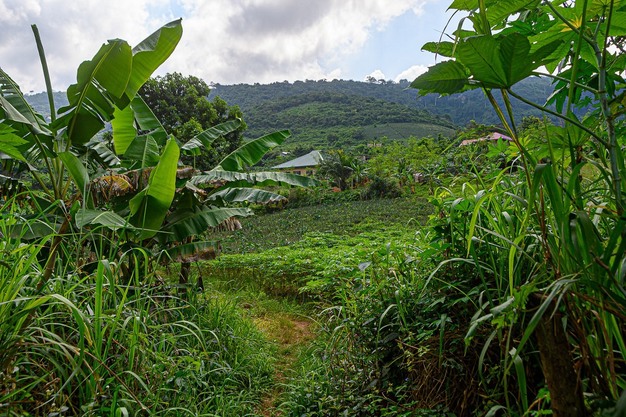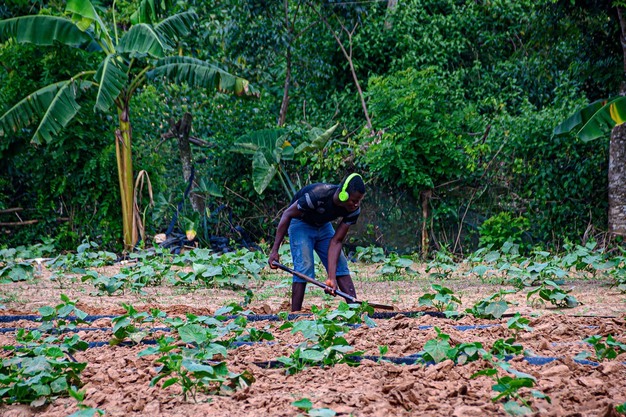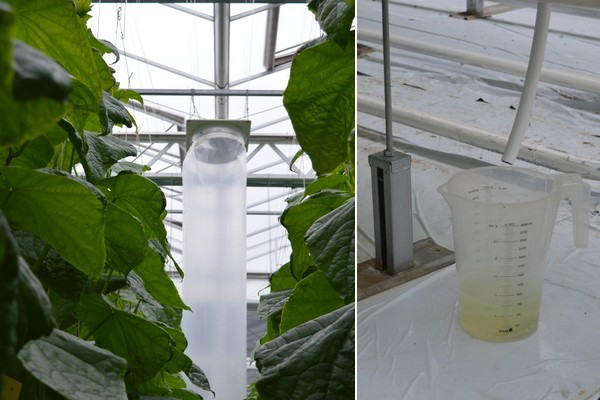Or rather, the question is, how does a plant cool when the stomata close? Gerrit Vermeer, a former cherry tomato grower and now a PUM advisor in tropical countries, corrected himself at the beginning of this cultivation contribution. Earlier, in response to challenges growers encountered with LED cultivation in tomato, he pointed out that plants manage energy even without evaporation. There are physical processes for that. In this story, too, Gerrit dwells on physical processes.
Why doesn't a plant in the tropics burn when its stomata close?
When there is not enough water, a plant closes its stomata to conserve water. Then evaporation is minimal and cooling is reduced. Overheating is imminent. Because the stomata are closed, the plant cannot use the latent energy for heat dissipation required for the phase transition from water to water vapor, i.e. 2260 KJ per liter of water.
If there is no water stress yet, you can see the leaves shining after the rainy season when the sun starts shining in full. Shine means the reflection of water on the leaf. If a person touched a steel greenhouse leg in the tropics, their hands would almost burn. And the leaf next to it is cool while undergoing the same sunlight.
Sun power is not low in the tropics - on a light day, the radiation there is about 6500 watts. That's twice as much as on light days in the Netherlands. The lightest day of the year here measures just under 3,000 watts. So why doesn't a plant in the tropics burn when its stomata close?

Heat dissipation in three ways
Besides evaporation and the latent energy required to do so, infrared radiation and conduction are the two other factors available to the plant to dissipate heat, but they cannot compensate for stomata closure. Conduction is a passive factor for the plant, depending on RH and convection (wind) it increases and decreases. Infrared depends on temperature. When a plant closes its stomata, there is usually a low RH. Conduction to the atmosphere decreases proportionally with RH.
So how does a plant regulate temperature at this radiation pressure combined with water shortage?
Gerrit brings in the Waterboxx. It delivers 1 liter of water per day through condensation. You can see that Waterboxx does not heat up when water condenses. No latent heat is released in the form of heating the condensing surface at the transition from water vapor to water.
However, energy is released in another form. It is the same with a leaf. There, given the huge amount of latent heat released, condensation should stop right away, but that doesn't happen there either.

The power of the plant
The law of conservation of energy says that the latent energy released during condensation (which continues even when the stomata are closed) must therefore be dissipated in some other way. This can be done through infrared radiation. This is a crucial fact that the plant uses to keep itself cool when stomata close in dry conditions.
A plant condenses when its temperature is lower than the room temperature. And when that condensation then evaporates again, it requires latent energy. Through conduction, heat is transferred from the leaf to the condensation on the leaves. This is also where we read the plant temperature. The incoming energy is processed in the growth process and supplied off and on via various routes. A plant uses this physically recognizable process to generate power.

© Cintya Chara Berthonnet | Dreamstime.com
Entropy and counter-motion
Entropy thus counter-moves, and the differences increase. It is then exclusively about energy and not about distribution. The plant cools down to below room temperature. One plant does this more strongly than another plant or tree. Condensation is thus stretched over a longer period. You can see that entropy does increase in an enclosed space, but outside, the physical interaction with water molecules enables a counter-movement that counteracts the increase in entropy.
The resilience of plants
This has been recognized in plants and trees, making it possible to close stomata without overheating. The plant also saves its energy by evaporating condensation on its leaves. Thus, resilience increases when temperatures get higher in the tropics.
This is also observed in a greenhouse. You can also smell it. A grower experiences this as a vigorous crop with high potency. This cooling always takes place when the leaf temperature is below the room temperature, and not just in the afternoon when the room temperature drops below the outside temperature. We see through the infrared thermometer that the plant temperature is usually lower than the room temperature. In the morning, you notice tension in the greenhouse when the sun raises the temperature too much. You then see that the plant temperature gets slightly above room temperature.

The crucial point in this process is
A plant is healthier if it can handle climate changes better, the condensation-evaporation process makes this possible. A plant saves energy this way, the roots also get more energy from the partitioning mechanism, and this improves water absorption. The process generates power for healthy plant growth.
Therefore, the second law, which is about entropy, should be revised on this point. This law should be universally characteristic, in terms of entropy increase, and practice, it does not do so through this process in open space. However, it does require sufficient water and water vapor. If there is not, the plant makes irreversible adjustments that slow down growth.
Summarising at the end of this contribution, Gerrit states: That entropy is always increasing is not the climate case. We see a countermovement. This is abundantly clear in the growth climate and traceable as a physical process.

For more information:
Gerrit Vermeer
[email protected]
